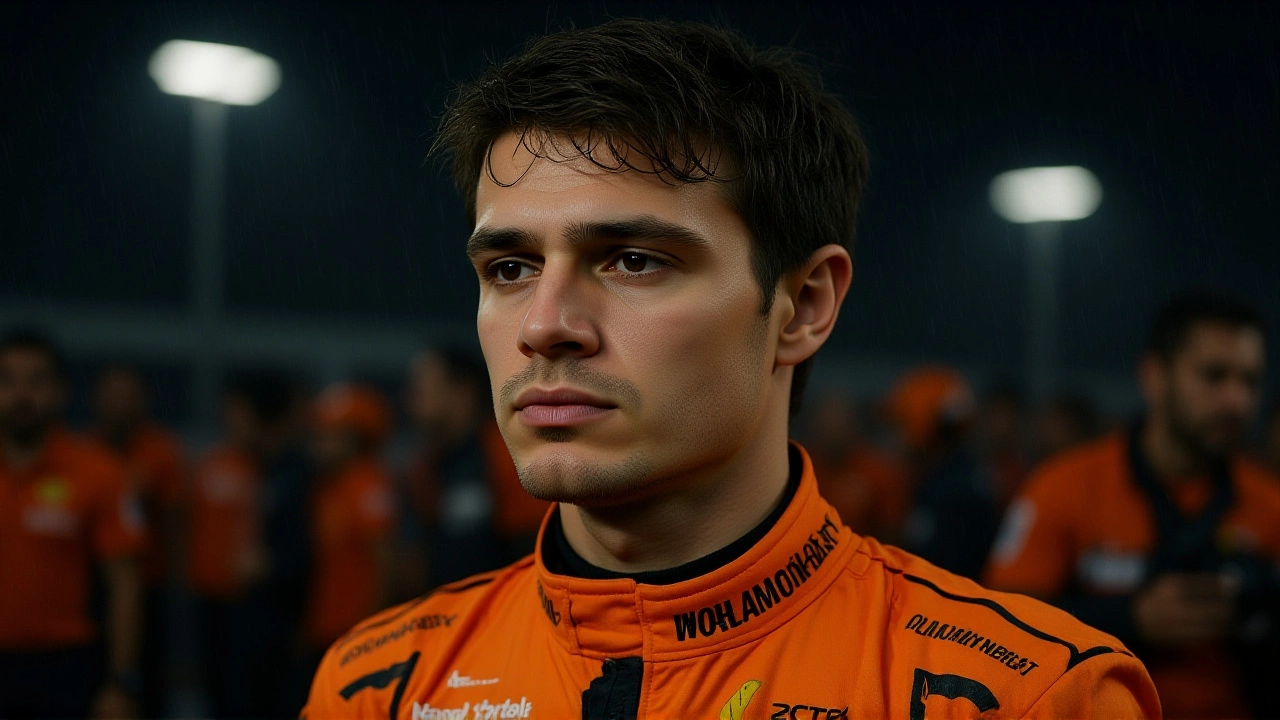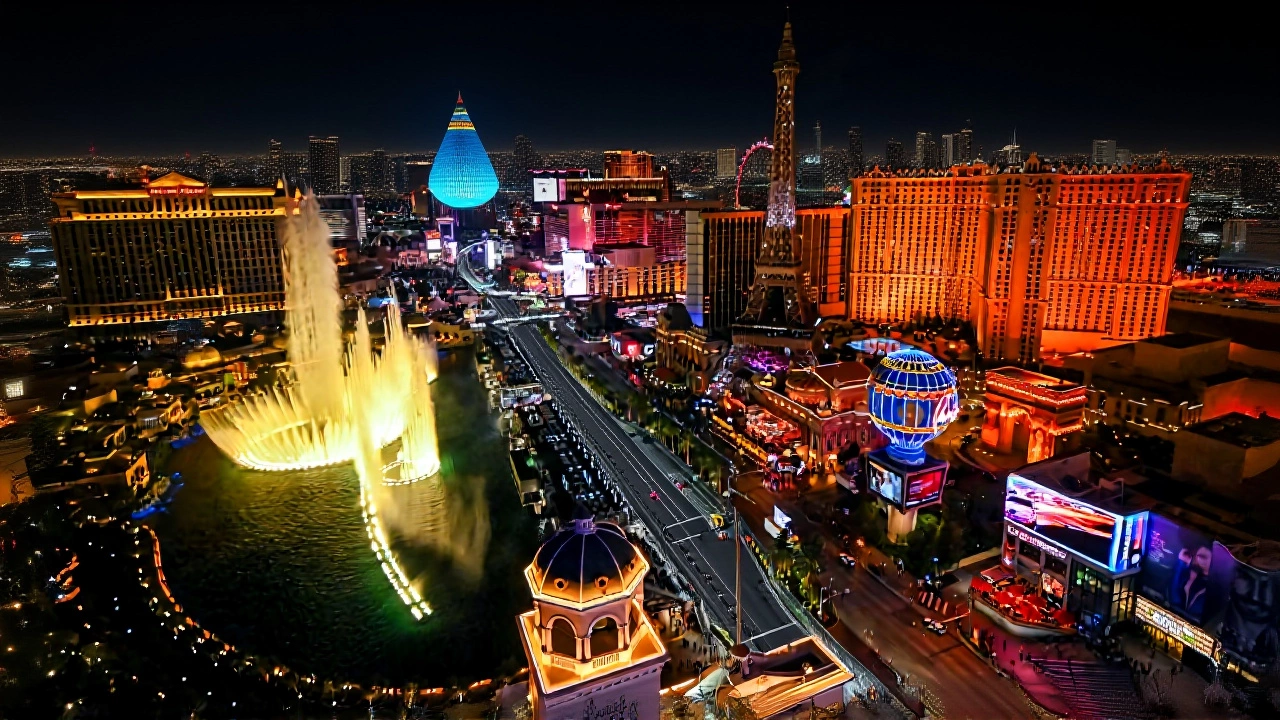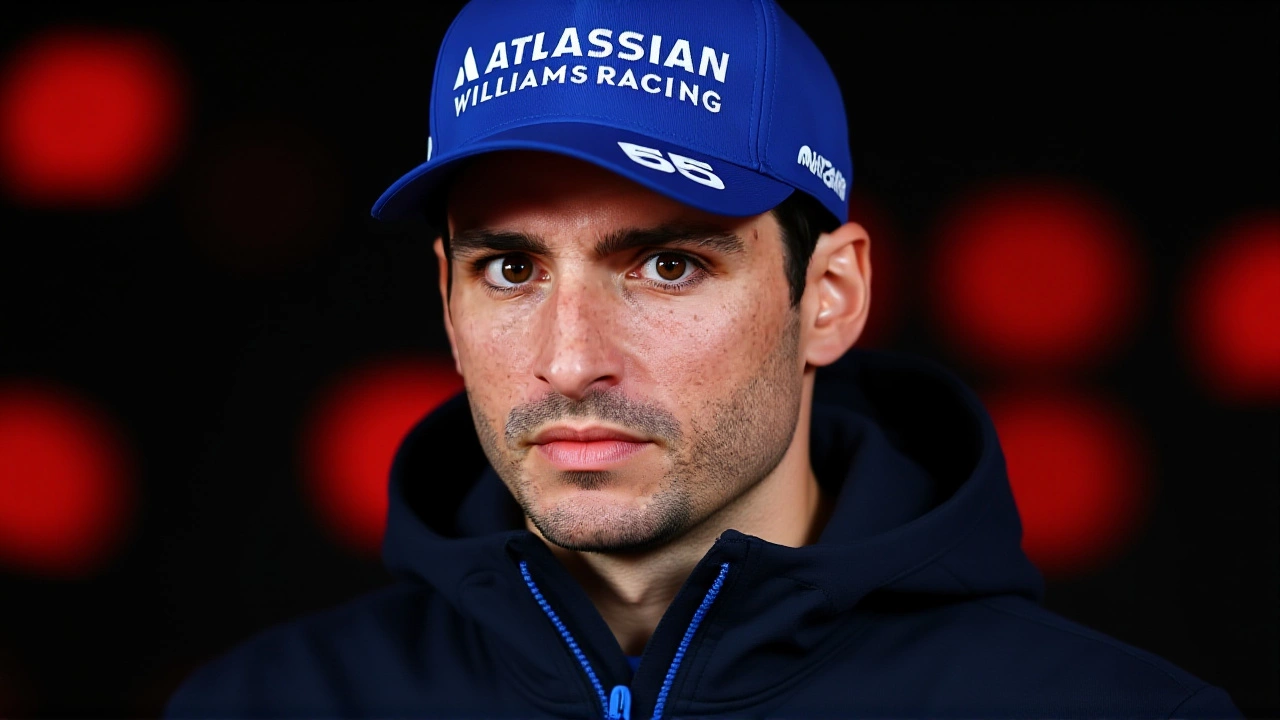When Carlos Sainz Jr. stood at the microphone during media day in Las Vegas on November 20, 2025, he didn’t mince words. "For the pinnacle of motorsport," he said, "this penalty is unacceptable." He was referring to the 10-second time penalty handed to Oscar Piastri after a chaotic incident at the Brazilian Grand Prix — a moment that sent Charles Leclerc spinning into the wall, ended his race, and ignited a firestorm among drivers. The collision happened when Piastri, trying to pass Kimi Antonelli’s Mercedes, locked up slightly under braking. Antonelli moved left. Piastri had nowhere to go. The result? A penalty. And a growing rebellion.
The Incident That Broke the Camel’s Back
What made this penalty so controversial wasn’t just the outcome — it was the context. Leclerc, the victim, publicly defended Piastri. "He didn’t deserve it," Leclerc said post-race. "Neither did Kimi. It was racing." And that’s the heart of it. In Formula 1, wheel-to-wheel combat has always been part of the sport’s soul. But in 2025, the Fédération Internationale de l'Automobile (FIA) introduced new driving standards — rules meant to bring consistency, but instead, they’ve created chaos.These guidelines, published in January 2025 after consultations with drivers, were never formally approved by the Grand Prix Drivers' Association (GPDA). They demanded that overtaking drivers keep their front axle aligned with the opponent’s wing mirror, banned "excessive" brake lock-ups, and defined what constituted "loss of control." The problem? Stewards began treating them like traffic laws — not racing principles.
A Pattern of Controversy
Sainz didn’t pick this moment randomly. He’s been here before. At the Dutch Grand Prix in Zandvoort on July 7, 2025, he was penalized for a clash with Liam Lawson. Williams appealed. The penalty was overturned. Then came Oliver Bearman’s penalty at the Italian Grand Prix in Monza on September 8, 2025 — a move that looked textbook to veteran observers. Then, Sainz himself was penalized again at the United States Grand Prix in Austin on October 20, 2025, for a move stewards called "dangerous." The team appealed. No reversal. The message? Some drivers get second chances. Others don’t."A lock-up doesn’t mean you’ve lost control," Sainz explained. "You can lock the wheels, still hit the apex, and keep the car on the racing line. But stewards treat every lock-up like a crash. That’s not racing. That’s robotics."

Drivers Are Speaking Up — Even Verstappen
The frustration isn’t isolated. Max Verstappen, the four-time world champion, joked during a media session ahead of the Qatar Grand Prix: "I’d run the rulebook through a paper shredder if I could." But he wasn’t laughing when he added: "I follow the rules. I just wish they made sense." His point? The more rules you write, the more you handcuff the sport. And the stewards? They’re stuck in the middle, bound by a manual that doesn’t account for split-second decisions at 200 mph.Alex Albon, who serves as GPDA director alongside Sainz, offered a more measured take. "There’s no us versus them," he said. "The FIA listens. But does listening lead to clarity? I’m not sure yet." That uncertainty is what’s driving the urgency.
The Qatar Meeting: A Turning Point
On November 28, 2025, the drivers — represented by the GPDA — will sit down with FIA stewards at the Lusail International Circuit in Qatar. This isn’t a PR event. It’s a crisis meeting. They’ll review four key incidents: Brazil, Zandvoort, Monza, and Austin. The goal? Decide whether the guidelines are rules to be followed blindly… or principles to be interpreted with racing instinct."We’re not asking for leniency," Sainz stressed. "We’re asking for fairness. For consistency. For the people who watch this sport to know — when a driver makes a move, is it a racing incident… or a penalty?"
The stakes are high. If stewards keep applying these rules like a computer algorithm, the sport risks becoming sterile. Fans don’t want perfectly sanitized racing. They want drama. They want bravery. They want to see drivers push the limits — not fear the stewards’ clipboard.

Why This Matters Beyond the Track
Formula 1 isn’t just about speed. It’s about trust. Trust that the officials are fair. Trust that the rules reflect reality, not theory. When drivers like Sainz and Verstappen — men who’ve won championships — say the system is broken, you listen.And it’s not just about penalties. It’s about identity. If the FIA continues down this path, it risks alienating the very people who make the sport exciting: the drivers. And without them, without their risk-taking, without their instinctive battles… what’s left? A simulation. A video game with real engines.
The Qatar meeting won’t solve everything overnight. But if they walk away with a single change — allowing stewards to consider intent, context, and racing history — it could restore faith in the sport’s soul.
Frequently Asked Questions
Why did Sainz call the Piastri penalty 'unacceptable'?
Sainz argued that the collision between Piastri and Antonelli was a classic racing incident — not reckless driving. Multiple drivers, including Leclerc, agreed no penalty was warranted. The FIA’s rigid interpretation of brake lock-ups as automatic loss of control ignored the reality of high-speed overtaking, where tiny margins define success or failure.
What’s wrong with the FIA’s driving guidelines?
The guidelines, published in January 2025, were developed without formal GPDA approval and lack nuance. They treat mechanical actions like brake lock-ups as automatic violations, ignoring context such as track position, driver intent, and racing line. This has led to inconsistent rulings — overturning some penalties while enforcing others arbitrarily.
How did other drivers respond to the controversy?
Max Verstappen joked about shredding the rulebook but admitted he follows it. Alex Albon praised the FIA’s collaborative tone but doubted clarity would emerge. Charles Leclerc, the victim of the Brazil incident, defended Piastri, calling the penalty unjust. This unified front from top drivers signals deep systemic frustration.
What will happen at the Qatar meeting?
On November 28–30, 2025, the GPDA and FIA stewards will review four key incidents: Brazil, Zandvoort, Monza, and Austin. The goal is to determine whether guidelines should be interpreted with discretion or applied as strict rules. A compromise may allow stewards to consider intent and context — not just technical violations.
Could this change how Formula 1 races are officiated?
Absolutely. If stewards gain more flexibility, we could see fewer penalties for wheel-to-wheel contact and more emphasis on driver intent. This would restore the sport’s traditional balance: rewarding boldness while punishing recklessness. But if the FIA doubles down on rigid rules, drivers may lose trust — and fans may lose interest in the sport’s unpredictability.
Is this the first time drivers have challenged FIA rules?
No. Drivers have pushed back before — notably in 2019 over the "halo" safety device and in 2021 during the Hamilton-Verstappen controversy. But this is unique: a coordinated, multi-incident campaign led by the GPDA, with clear demands for interpretive flexibility, not just appeals. The stakes feel higher because the rules are now codified, not discretionary.
